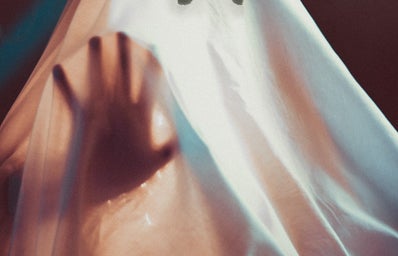The month of October is characterized by one day and one day only, the 31st. Halloween. There’s so much that goes into this day of fun and horrors, and I think one of the most pivotal pieces are the monsters. Stories of spooky creatures have been around for thousands of years and are thoroughly engrained in both pop culture and the human psyche. I picked a few well-known supernatural beings and delved a little bit into their origin stories because nothing says scary like a history lesson, right?
First up, we have the bloodsuckers. A popular theory behind the origin of vampires comes from the uncanny comparison between these monsters and rabies victim. A rabies epidemic struck Hungary in the 1700s which matches up to the general location and time period of the birth of these legends. Common symptoms of rabies include aggression, a tendency to bite people–and therefore spread the disease–light and smell sensitivity which would cause people to avoid the sun or odorous foods like garlic, and insomnia, an infliction that could make a person seemingly nocturnal.
With the publication of his most famous novel, Dracula, Bram Stoker brought vampires into the world of gothic fiction in the late 19th century. Little did he know the lasting impact his book would have on fictional media today. The titular character, Count Dracula, is said to be based off of Vlad the Impaler, a harsh ruler of the Wallachian region in Romania. Having read the novel myself, it’s hard not to see the humor in Stoker’s descriptions of the Count’s strange behavior. The main characters wonder about why he lives alone in a giant castle with no mirrors, only comes out at night, and grows aggressive with the sight of blood; today it is obvious that these traits can be attributed to vampirism.
Bram Stoker did not have a monopoly on vampires; fear of the undead used to be rampant throughout Europe and the New World. A woman in Rhode Island named Mercy Brown died of tuberculosis along with several other family members a few years before the publication of Dracula. Having no understanding of infectious diseases, the townspeople blamed her for the death of her family members. When her body was dug up and found to not have decayed due to the cold, this only further solidified their belief in the supernatural and began the practice of burning the organs of the dead.
Next, we have witches. Witches and their magic are very closely tied to Halloween and have been around for seemingly forever. The first mentions of witches can be found as early as biblical times, and some form of these magical beings is present in cultures all over the world. Like most things that couldn’t be easily explained or understood , magic, and by association witches, were linked to the Devil by Christianity and witchcraft was deemed an executable offense. Starting in the mid-1440s all the way to 1660, “witches” were put to death across Europe. Oftentimes they were really just innocent women whose only crime was being born into an oppressive, patriarchal society where the masses feared uncertainty and the men in power feared losing it.
A few years after the witch frenzy died down in Europe, it picked up again in America. Perhaps the most famous of these incidences is the Salem Witch Trials that took place in 1692. Arthur Miller even wrote a famous play, “The Crucible”, based on the events. Historians today credit many possible reasons behind the hysteria that took place in Salem that year: the suffocating pressure of following Puritanism, the dominant religion of the region, tensions with natives that came with the aftermath of the French and Indian War, a smallpox epidemic, and poisonous fungus that grew in the area and could produce hallucinations.
Regardless of the truth behind the witchcraft accusations of the past, witches still exist today. Modern witches practice a religion known as Wicca which is officially recognized in both the United States and Canada. Contrary to the connotation attached to the word “witch”, Wicca practitioners mainly use their spells and potions for healing and seek peace and tolerance.
Finally, there are the brain eaters. Zombies are a popular monster seen throughout television and have become common foes in many video games. The general idea behind is a zombie is that a dead body is somehow reanimated, often due to a virus, and walks around with the sole purpose of eating and/or infecting healthy humans. This fear of “the walking dead”, to steal the title of a popular show, can be traced as far back as Ancient Greece where skeletons were found purposefully weighed down by heavy objects such as rocks possibly to prevent the bodies from crawling out of their graves and terrorizing the living.
Zombies are also very present in Haitian culture, specific when it comes to voodoo. It is also believed that zombies might have been a representation of slavery. Regarding voodoo, there is a classification of practitioners known as Bokor who essentially serve as priests that can be hired for certain tasks involving voodoo witchcraft. One of their services is creating a coup de poudre, or “zombie powder”. This powder is a mixture of many ingredients, including tetrodotoxin, a paralyzing neurotoxin that can be deadly in large amounts. The symptoms of this neurotoxin most likely fed into zombie mythology.
The fear of a zombie apocalypse is not just a thing of the past. The CDC took advantage of the public’s obsession and created a page on the website with advice on how to survive a zombie outbreak. What started out as a joke became an effective way to provide useful information on getting through a real disaster.
Halloween is a holiday built from culture and stories. Personally, I’ve always loved hearing about the mythology behind the beasts. I think it’s a very human act to create something magical and supernatural out of the scary unknown. Even if it’s all made up, there is something to be said for our ancestors’ creative capacity; clearly there is something about scary stories that captivates us, or we wouldn’t still be telling them today. At the end of the day, regardless of what you believe, Halloween is a time to let your guard down, get a little scared and eat too much candy by the glow of a jack-o-lantern. Besides, who knows? Maybe there’s a little more magic in this world than we think.


